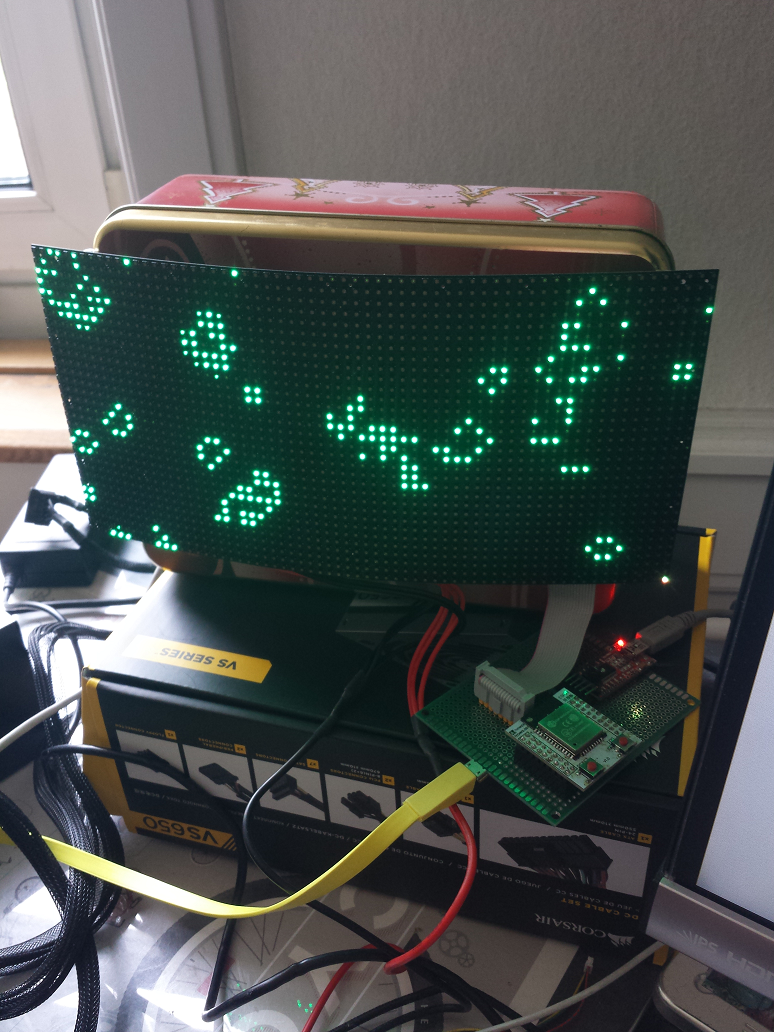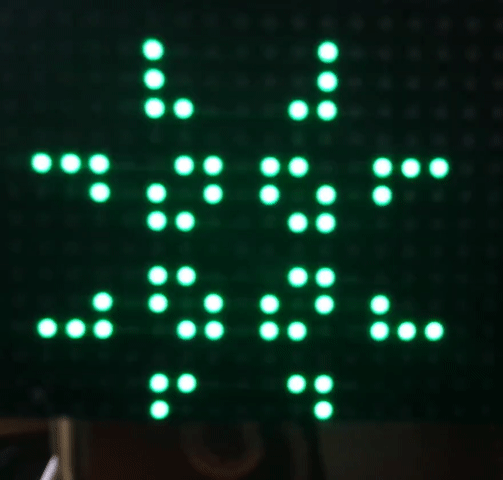Here is a test of a flexible P4 RGB LED 64x32 matrix screen.

My trusty "Conway's Life" program was used as the test culprit along with a variant of the
adafruits P3 matrix driver Library (arduino/mega/etcetc)
ESP32 P3/P4 matrix driver Library
Its blisteringly fast on the ESP32 , the gif below has been slowed down BTW.
Its one of the recuring loops that can happen , " Repetition is the Mother of Skill"

|
ESP32 "Life is Life" Conways Life |
|
/*
* Conway's "Life", adapted for ESP32
*/
#include <Adafruit_GFX.h> // Core graphics library
#include <P3RGB64x32MatrixPanel.h>
// constructor with default pin wiring
P3RGB64x32MatrixPanel matrix;
byte world[64][64][2];
long density = 20;
int polltime;
void setup() {
matrix.begin();
randomSeed(analogRead(0));
randomscreen();
}
void loop() {
if (millis()-polltime >=50) { displayoutput(); polltime=millis();};
}
int neighbours(int x, int y) {
return
world[(x + 1) % 64][ y ] [0] +
world[ x ][ (y + 1) % 32] [0] +
world[(x + 64 - 1) % 64][ y ] [0] +
world[ x ][ (y + 32 - 1) % 32] [0] +
world[(x + 1) % 64][ (y + 1) % 32] [0] +
world[(x + 64 - 1) % 64][ (y + 1) % 32] [0] +
world[(x + 64 - 1) % 64][ (y + 32 - 1) % 32] [0] +
world[(x + 1) % 64 ][ (y + 32 - 1) % 32] [0];
}
void randomscreen() {
for (int y = 0; y < 32; y++) {
for (int x = 0; x < 64; x++) {
if (random(100) < density) {world[x][y][0] = 1; }
else {world[x][y][0] = 0;}
world[x][x][1] = 0;
}
}
}
void displayoutput(){
for (int y = 0; y < 32; y++) {
for (int x = 0; x < 64; x++) {
// Default is for cell to stay the same
world[x][y][1] = world[x][y][0];
int count = neighbours(x, y);
if (count == 3 && world[x][y][0] == 0) { world[x][y][1] = 1;matrix.drawPixel(x, y, matrix.color444(0,255,0)); } //new cell
if ((count < 2 || count > 3) && world[x][y][0] == 1) { world[x][y][1] = 0;matrix.drawPixel(x, y, matrix.color444(0,0,0)); } //cell dies
}
}
// swap next generation into place
for (int y = 0; y < 32; y++) {
for (int x = 0; x < 64; x++) {
world[x][y][0] = world[x][y][1];
}
}
}
|
...and those interested in the colours.... its wrapped around my metal bin (it comes with magnetic feet stand-offs)





64 x 64 game of life with
64 x 64 game of life with wireless and lovely display for a pittance...
Amazing !!!
Love your posts Sir Gareth !